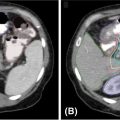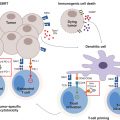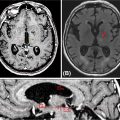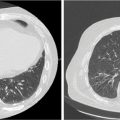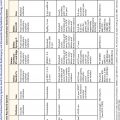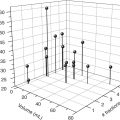133CHAPTER 9
Patient Safety
PATIENT SAFETY
Although new, advanced techniques such as stereotactic body radiation therapy (SBRT) have demonstrated the ability to improve treatment outcomes for certain disease conditions, they entail a level of complexity that makes assuring the quality and safety of such treatments challenging to say the least. Involving, as they do, the delivery of highly conformal treatments with sharp dose gradients outside small, and maybe moving, targets, using one or a few very large dose fractions, the margin for both dose and localization error is much reduced for SBRT treatments compared with traditional, fractionated radiation therapy. Particularly in the early days of stereotactic radiotherapeutic techniques, several high-profile incidents were reported and have been described in detail elsewhere (1). Most of these incidents resulted from a lack of understanding by the users of the technical complexities of these new techniques and associated technologies. A common problem arose from the difficulty of measuring radiation output in small fields for which electronic equilibrium is not established. Other reported incidents involved laterality errors particularly in symmetrical structures such as the brain. Recognizing the challenges of SBRT, the American Association of Physicists in Medicine (AAPM) has been able to offer guidance on these and other critical SBRT topics through its Report of Task Group 101 (TG-101) (2), which if understood and followed should minimize errors and maximize treatment quality.
Reports in the popular press, and even in the scientific press, tend to focus on catastrophic incidents with consequences that are apparent at the individual patient level. Such incidents represent such a severe degradation of quality that the effect is manifested on an individual affected patient. It makes no sense, however, to assume that patients who do not suffer from these widely publicized, catastrophic events all receive optimum, high-quality treatment. For a population of patients there must be a continuous distribution of departures from quality ranging from no departure, that is, the treatment is delivered exactly as prescribed, to such a deviation in dose or location (both of which could be four-dimensional) that a patient suffers identifiable injuries. If this supposition is correct, then there must surely be patients who receive suboptimal radiation therapy that compromises outcome through reduced longevity or unnecessary side effects but to a degree that would be apparent only in a cohort of patients and could not be unambiguously identified on any one individual member of that cohort. When we think about patient safety, we tend to think about those highly publicized incidents that result in detailed investigations, publications by authoritative bodies, and, frequently, finger pointing. What we should be thinking about is how to minimize any degradation of quality, whether catastrophic or not, as any level of degradation of quality has the potential to impair the patient’s quantity and quality of life. It is artificial and not helpful to imagine a firm boundary between safety and quality. They are interrelated concepts 134and, generally, enhancing quality will inevitably lead to safer radiation therapy.
So, if our goal is to enhance safety (and quality), where do we start? Many strategies have been described in the literature but it is increasingly recognized that individual strategies will not exhibit sustainable success unless overlaid on a solid Safety Culture within the organization. So the next question is the following: What is Safety Culture? The Nuclear Regulatory Commission (NRC) in the United States has given this particular issue considerable thought. It succinctly defines (nuclear) Safety Culture as the “core values and behaviors resulting from a collective commitment by leaders and individuals to emphasize safety over competing goals to ensure protection of people and the environment” (3). Two key words in this definition are “behaviors” and “commitment.” In the case of the former, the NRC’s definition makes it clear that merely making warm, fuzzy statements about safety is by no means sufficient to convince a regulator, or anyone else, of the existence of a Safety Culture. There have to be behaviors and tangible activities to substantiate any claim that a Safety Culture exists in an organization. The NRC discusses what appropriate activities might be and we return to this discussion later in this chapter. The second key word is “commitment.” Again, words alone will not suffice to establish commitment. The only meaningful evidence of commitment is the allocation of resources to the endeavor of interest—in this case the development and maintenance of a Safety Culture. And resources could be as simple as some protected time particularly for those leading the initiative to focus on safety/quality issues. A further point to note is that the word “culture” is meaningful only when applied to a group of people such as an organization. Buy-in from the whole team is essential for a credible Safety Culture.
Let us assume that an enlightened administration has allocated some resources to establish and maintain an effective Safety Culture. The next natural question that arises is the following: Where do we go from here? For any venture to be successful there has to be leadership that accepts the responsibility for the venture, is empowered with the necessary degree of authority, and is ultimately accountable to the provider of the resources. A common misconception is that leaders have to be senior figures in an organization. In reality, everyone is endowed with some degree of leadership ability. So in thinking about Safety Culture, it would be fitting to consider members from any of the radiation therapy disciplines provided they have credibility with their colleagues and are vested with the appropriate degree of authority over safety issues. Although the authority of the Safety Culture leader should be clear to all members of the team, sustainable progress is likely to be made only if that authority is never or only rarely used. In the modern environment, reasoned arguments leading to consensus decisions are far more likely to be successful than barking out orders! So how do we get consensus decisions in a radiation therapy department of maybe 30 or more busy people? We pick representatives from the various professional groups and get input from them to advise the leader on safety/quality issues. We have thus established our department’s Safety Committee. These representatives would ideally have leadership and communication abilities too as they are the conduits between their professional groups and the safety leader. An important feature of the Safety Committee and its leader is that the reporting relationships should, as far as possible, be separated from routine clinic operations. The NRC is very clear on this point. Should a conflict exist between safety and operational issues, safety takes precedence. Separation of reporting relationships will minimize the probability of such conflicts.
Any committee, including the Safety Committee, needs to have a clear mandate; otherwise, progress and success cannot be monitored. So what might the mandate of the Safety Committee be? A good place to start might again be a modified version of the work of the U.S. NRC (3). So, for example, the mandate could be “To establish a Safety Culture defined as the core values and behaviors resulting from a collective commitment by leaders and individuals to emphasize safety over competing goals to ensure protection of patients, people and the environment.” We have introduced “patients” into the NRC definition, as they will remain the primary concern of all radiation oncology facilities. One advantage of turning to the NRC for help with a safety initiative is that they have elaborated, in general terms, many of the key features of a meaningful Safety Culture. It is true that the focus of the NRC Safety Culture–related documents is on the nuclear industry. However, very little imagination is required to adapt their discussion of the topic to the radiation therapy clinic.
The NRC has identified a nonexhaustive list of nine traits that it associates with Safety Culture: Leadership Safety Values and Actions, Work Processes, Questioning Attitude, Problem Identification and Resolution, Environment for Raising Concerns, Effective Safety Communication, 135Respectful Work Environment, Continuous Learning, and Personal Accountability. A good place for a Safety Committee to start its work is to consider each of these traits in some detail and to explore opportunities for strengthening each of them in the clinic. We now take a look at some initiatives that are used in clinics around the world and associate them with the NRC’s Safety Traits. Two important national initiatives are incident learning (Problem Identification and Resolution) and prospective error management (Work Processes); these two traits are deferred for a more detailed discussion later in this chapter.
If upper management has allocated resources to the Department Safety Committee, this already constitutes a level of commitment to safety (Leadership Safety Values and Actions). To solidify this commitment, upper management should take an active interest in the workings of the committee such as occasionally appearing at committee meetings. Leadership at the Committee level could take the form of organizing regular safety rounds and recommending to management that some form of recognition be implemented for staff members who have made significant contributions to the Safety Culture.
Time-outs are being increasingly adopted as a useful strategy to encourage the practitioner to question himself or herself as well as to question others on the salient features of the exercise about to be conducted (Questioning Attitude). In radiation therapy, there are many activities of interest. These activities typically involve the planning and delivery of a treatment but could equally concern the calibration of a beam. A routine time-out might or might not be accompanied by a checklist. Ideally, one of the staff would require active confirmation from others present that the exercise, for example, dose delivery, could safely begin. Instituting routine time-outs should be a relatively straightforward initiative for a Safety Committee to promote and that could immediately establish the relevance and credibility of the Safety Committee. In addition to routine time-outs, the culture should be such that every member of the team feels comfortable calling a time-out at any time when he or she is uncertain about some aspect of the activity at hand. In fact, a good way of obtaining a measure of the depth of a Safety Culture is to ask a new member of staff after 2 months in the clinic whether he or she feels empowered to call a time-out irrespective of who is present. A negative answer suggests that more work might need to be done in this area. The diagnosis of the problem could involve Power Distance issues to be discussed briefly later.
Time-outs also partially address the trait of Environment for Raising Concerns. The NRC document emphasizes that negative responses to the raising of concerns, such as intimidation or harassment, have no place in an effective Safety Culture. Another opportunity for strengthening this trait is to encourage staff to raise concerns through a representative on the Safety Committee. As the Safety Committee ideally reports outside the clinic operations organizational structure, the staff member raising a concern should be protected from any possible retribution. Strong interpersonal and communication skills on the part of the Safety Committee members will contribute to an Environment for Raising Concerns.
There are many aspects to Effective Safety Communication, which the Safety Committee could explore. Perhaps the simplest communication pathway would be to make the agendas and minutes of the Safety Committee meetings available for all staff to peruse. Another opportunity would be to make Safety Committee meetings open to all, although there is a slight risk here that those unfamiliar with the workings of the committee might, for whatever reason, introduce topics not within the charge of the committee. Perhaps the most effective means for safety communication are department-wide and regularly scheduled safety rounds. To maximize the efficiency of such meetings, they need to be structured and not become a free-for-all, although participation by the audience should be encouraged. Developing an agenda for such a meeting is not difficult. For example, recent actual or near-miss incidents in the clinic could be discussed as well as reviews of recent literature in the area. Keeping an attendance sheet will reinforce the importance of attending such meetings.
Hofstede developed the concept of Power Distance Index in the 1970s. Power Distance Index measures the extent to which the less powerful members of organizations and institutions accept and expect that power is distributed unequally (4). In other words, in a high Power Distance environment, there is a clear hierarchy within the organization and everyone accepts that you do not question your “superiors” and you do not expect to be questioned by those lower down the hierarchical tree. A high Power Distance conflicts with a Respectful Work Environment in which all members feel empowered to contribute to safety issues. If a high Power Distance environment exists in an organization, it can be very difficult to change, as those higher up the ladder are likely to be comfortable with, and possibly have a vested interest in, the situation as it 136is. Probably the best the Safety Committee can do is to make conscious efforts to reduce the Power Distance from their level down. Ingrained cultures within organizations are very difficult to change but that is not a reason for not trying.
A quick low-resource investment, which will strengthen the trait of Respectful Work Environment, is the establishment of No Interruption Zones. These can be in space or time and indicate that a critical activity, for example, a chart check, is underway and the person conducting the activity is not to be distracted. Distractions are widely recognized as conducive to errors. Instituting No Interruption Zones is relatively straightforward to do.
A well-functioning Safety Committee that has open lines of communication with all staff of the Department goes a long way toward strengthening the safety trait of Continuous Learning. The NRC describes this particular trait from both the organization’s and the individual’s perspectives. The Safety Committee represents the organization and, if effective, will learn continuously from its own deliberations. Regularly scheduled safety meetings are obviously forums for individual members of staff to develop their knowledge of safety issues.
The Safety Committee can encourage all members of staff to take Personal Accountability for their contributions to safety issues but would not have the authority to monitor compliance with this trait. However, the Safety Committee could recommend to upper management that some suitably worded statement reflecting this safety trait be included in all letters of offer of employment. Compliance with this trait could be further strengthened through incorporating a specific component on safety in regular staff performance appraisals.
The two safety traits that are still left to be discussed in this chapter are the following: Problem Identification and Resolution and Work Processes.
One aspect of Problem Identification and Resolution can be efficiently handled using an Incident Learning System (5). This is a retrospective approach to error management in which we learn from untoward events that actually happened, or nearly happened, and we use that learning to improve our Work Processes. The quickest way to get Incident Learning up and running is to participate in an existing system such as Radiation Oncology Incident Learning System (RO-ILS) (6), Center for Assessment of Radiological Sciences (CARS) (7), or Safety in Radiation Oncology (SAFRON) (8). An alternative is to develop an in-house system. This would be a topic on which the Safety Committee should have a view. It will be the Safety Committee, or a group under its supervision, that will undertake the investigation of reported incidents.
Incident Learning Systems have been discussed in detail elsewhere (9). We just touch on a few of the salient features of such a system here. It is important to recognize that all events that actually happened or nearly happened (i.e., near misses) at a given facility should be captured. In fact, near misses are also known as free lessons and there should be many more of these than of actual events. In an effective Incident Learning environment, all individuals within a facility are encouraged to report all incidents. A question that is often asked is the following: Should the reporter of an incident be identified or not? Anonymous reporting, while protecting the reporter from any negative consequences, makes it impossible to follow up and hence to clarify details of the incident. A better alternative is confidential reporting in which the Safety Committee knows the identity of the reporter but the report is anonymized before dissemination to a wider audience. To implement such an approach requires the Safety Committee to be at an arm’s length from the operational infrastructure, which is likely to involve the reporter’s superiors.
The investigation of an incident should culminate in the identification of root causes and contributory factors. Armed with knowledge of the root causes and contributory factors, we can institute appropriate preventive actions to avoid a recurrence of the incident.
Another important question is the following: How do we know that incident learning, which, of course, consumes resources, is effective? A successful incident learning system will display two features. First, the number of reports coming in will be high and relatively constant over time, and second, the actual or potential severity of the reported incidents will be dropping (10). Maintaining a high level of reporting requires all the staff to be fully engaged, and to achieve this, constant feedback is essential. If staff ever get the impression that their reporting efforts just go into a black hole from which nothing emerges, they will soon lose interest and the reporting frequency will drop off. An important function of the Safety Committee is to maintain momentum, interest, and relevance, and this requires some effort.
The complementary approach to retrospective incident learning is prospective and is based on postulating what might go wrong in the future and developing a quality/safety program to minimize the 137chances of failure. The AAPM’s TG-100 is actively promoting this approach through the publication of “The report of Task Group 100 of the AAPM: application of risk analysis methods to radiation therapy quality management” (11). Adoption of the TG-100 methodology strengthens the two safety traits, Problem Identification and Resolution and Work Processes. As this is a new approach for most of the radiation oncology community, we briefly outline the methodology recommended in this report for establishing a risk-based quality management (QM) program in radiation therapy.
The ultimate aim of the exercise is to develop a QM program that provides the patient with confidence that the highest standards of quality and safety will be reached and maintained. The QM program is built on three components: Process Mapping, Failure Modes (FMs) and Effects Analysis, and Fault Tree Analysis (FTA).
Process Mapping is familiar to many of us. It is the process of describing, usually diagrammatically, the major steps and substeps undertaken to complete a patient treatment. Process maps are best generated by a multidisciplinary team, which might be the Safety Committee, or it might be a dedicated group consisting of professionals who are involved in the care of the patient such as radiation oncologists, medical physicists, dosimetrists, therapists, nurses, IT personnel, and administrators. In either case, it is important to ensure that all key and critical steps required to complete the given process are included. As well as being the first step in TG-100’s methodology, process maps can have another significant benefit for the radiation therapy clinic. A process map is a graphical representation of a Standard Operating Procedure and hence defines a Work Process. It is widely recognized that standardizing procedures has the ability to enhance both quality and safety. However, process maps can quickly become very complicated structures. It is advisable to restrict their scope to the purpose for which they are intended. It is also important that all users of the process map have the same understanding of the words used to describe the various major steps and substeps.
Armed with a process map, the next phase in TG-100’s methodology starts with the selection of a step in the process for further analysis. Having selected a step, the question of what could possibly go wrong at this step is posed. The answer(s) to this question are the FMs associated with this step. Having identified one or more FMs, the group performing the analysis then estimates how likely it is that an event would occur that could lead to the postulated Failure. This is the Occurrence value. Next, an estimate is made of the severity of the FM should it reach the patient. This is the Severity value. The last judgment the group is called upon to make is the probability that the pathway leading from the originating event will not be intercepted before reaching the patient. This is the Detectability. In the TG-100 approach, Occurrence, Severity and Detectability are all scored between 1 and 10. Multiplying these three estimates together yields the Risk Priority Number (RPN), which will lie between 1 and 1,000. A high value of RPN indicates a very hazardous step and a high value of severity indicates potentially major consequences of the FM on the patient whether or not the FM is likely to occur and/or not be detected. This process is repeated for all identified FMs. The output of this analysis, a RPN for each FM, provides the opportunity for ranking FMs from the most to the least significant and hence for directing resources to those issues presenting potentially the greatest hazard to the patient. Prioritizing interventions can also be based on the Severity scores of the FMs, or, indeed, by setting thresholds for action on both Severity and RPN.
More detailed examination of the pathways that can lead to Failures at patient treatment can be helpful in designing an appropriate Quality/Safety Management program. FTA is a technique commonly used to delve deeper into pathways to failure. A Fault Tree links events and circumstances through AND and OR gates to the FM. It can be thought of as a hypothetical Root Cause Analysis (RCA). In an RCA, an actual incident is traced back to causes and contributing factors, frequently being illustrated on a Cause and Effect diagram. In FTA, it is not an actual incident that starts the tree but rather a postulated failure. Because the RCA attempts to describe actual events and their relationships, OR gates are not necessary, because we believe we know the chain of events. However, visually a Fault Tree looks similar to a Cause and Effect diagram. The value of FTAs, in the context of prospective risk management, is that they can help identify where best to place barriers in the possible failure pathways and, once a few FTAs have been designed, systemic safety improvement measures, such as increased training or better documentation, are readily apparent.
The overall objective of this exercise is to develop a QM program for a process, or at least part of a process, under consideration. Failure modes and effects analysis (FMEA) helps us to prioritize those FMs that pose the greatest hazard to the patient and hence require the most urgent attention. FTA can 138highlight those systemic infrastructure issues that have the greatest potential to compromise quality and safety and it also provides a basis for decisions on where to place barriers to prevent error propagation. Information obtained from the application of these three tools can then be used to develop a risk-based quality and safety management program.
The QM program developed out of the application of the TG-100 methodology will be specific to the clinical process under study. Thus, the TG-100 approach customizes Quality and Safety Management to individual radiation oncology departments reflecting their unique ways of doing things. It is important to recognize that the TG-100 methodology is quite different from the prescriptive approaches to quality control that we have grown familiar with and that have served us well over many years. Hence, it is definitely not a one-size-fits-all solution to quality and safety. It is equally important to note that there will continue to be a role for prescriptive approaches, although, in the future, they are likely to be based more on the type of analysis discussed here.
We have now discussed actions and activities that can strengthen all nine of the NRC’s Safety Culture traits. Our suggestions are far from exhaustive and further ideas for useful activities can be gleaned from the burgeoning literature in the field (12–16).
Committee meetings and the work surrounding them can take resources away from other important activities; so it is always worth collecting evidence that a committee is effective. A simple means for doing this is through the use of the AAPM’s Safety Profile Assessment tool (17, 18). This is available to all at no cost on the AAPM website. The tool has many useful features including the ability to track progress on safety/quality issues over time. Thus, it is an ideal means for assessing the value and effectiveness of the Safety Committee.
A newly available resource for those interested in quality and safety in radiation therapy has recently been made available by the International Atomic Energy Agency (19). It is totally free and includes a Certificate of Completion feature, which makes it ideal for graduate-level and residency training programs.
Finally, it cannot be overemphasized that establishing a sustainable Safety Culture depends critically on the availability of resources, specifically protected time to work on safety issues, and most importantly the quality of the leadership of the initiative. Time spent on selecting those charged with leading the safety initiative is a vital initial investment.
REFERENCES
1. Solberg TD, Medin PM. Quality and safety in stereotactic radiosurgery and stereotactic body radiotherapy: can more be done? J Radiosurg SBRT. 2011;1:13-19. PubMed PMID: 29296293.
2. Benedict SH, Yenice KM, Followill D, et al. Stereotactic body radiation therapy: the report of AAPM Task Group 101. Med Phys. 2010;37:4078-4101. doi: 10.1118/1.3438081
3. NRC Safety Culture. Outreach and Education Materials. https://www.nrc.gov/about-nrc/safety-culture/sc-outreach-edu-materials.html. Last Reviewed/Updated May 24, 2018.
4. Hofstede G. Cultures and Organizations: Software of the Mind. London, UK: McGraw-Hill; 1991.
5. Cooke D, Dubetz M, Heshmati R, et al. A Reference Guide for Learning from Incidents in Radiation Treatment. HTA Initiative #22, Alberta Heritage Fund for Medical Research. http://www.ihe.ca/advanced-search/a-reference-guide-for-learning-from-incidents-in-radiation-treatment
6. Radiation Oncology Incident learning system; Sponsored by ASTRO and AAPM. https://www.astro.org/RO-ILS.aspx
7. Center for Assessment of Radiological Sciences, A Patient Safety Organization. https://www.cars-pso.org/radiotherapy-error-reporting.aspx
8. Safety in Radiation Oncology (SAFRON). https://www.iaea.org/resources/rpop/resources/databases-and-learning-systems/safron
9. Sutlief S, Caldwell B, Dunscombe P, et al. Reporting systems. In: Thomadsen BR, Dunscombe P, Ford E, et al, eds. Quality and Safety in Radiotherapy: Learning the New Approaches in Task Group 100 and Beyond. Madison, WI: Medical Physics Publishing; 2013.
10. Clark BG, Brown RJ, Ploquin J, et al. Patient safety improvements in radiation treatment through 5 years of incident learning. Pract Radiat Oncol. 2013;3:157-163. doi: 10.1016/j.prro.2012.08.001
11. Huq MS, Fraass BA, Dunscombe PB, et al. The report of Task Group 100 of the AAPM: application of risk analysis methods to radiation therapy quality management. Med Phys. 2016;43:4209-4262. doi: 10.1118/1.4947547
12. Preventing Accidental Exposure in External Beam Radiotherapy. https://www.iaea.org/resources/rpop/health-professionals/radiotherapy/external-beam-radiotherapy/accidental-exposure
13. Radiotherapy Risk Profile. http://www.who.int/patientsafety/activities/technical/radiotherapy_risk_profile.pdf
14. Towards Safer Radiotherapy. https://www.rcr.ac.uk/publication/towards-safer-radiotherapy
15. Preventing Accidental Exposures from New External Beam Radiation Therapy Technologies, ICRP Publication 112. http://www.icrp.org/publication.asp?id=ICRP%20Publication%20112
16. Safety is No Accident: A Framework for Quality Radiation Oncology and Care. https://www.astro.org/Product-Catalog/Products/Publications/SafetyisNoAccident/
17. Dunscombe P, Brown D, Donaldson H, et al. Safety profile assessment: an online tool to gauge safety-critical performance in radiation oncology. Pract Radiat Oncol. 2015;5:127-134. doi: 10.1016/j.prro.2014.10.012
18. Ford EC, Brown D, Donaldson H, et al. Patterns of practice for safety-critical processes in radiation oncology in the United States from the AAPM safety profile assessment survey. Pract Radiat Oncol. 2015;5:e423-e429. doi: 10.1016/j.prro.2015.06.005
19. E-learning Modules on Radiation/IAEA. https://www.iaea.org/search/googles/e%20learning
Stay updated, free articles. Join our Telegram channel

Full access? Get Clinical Tree


